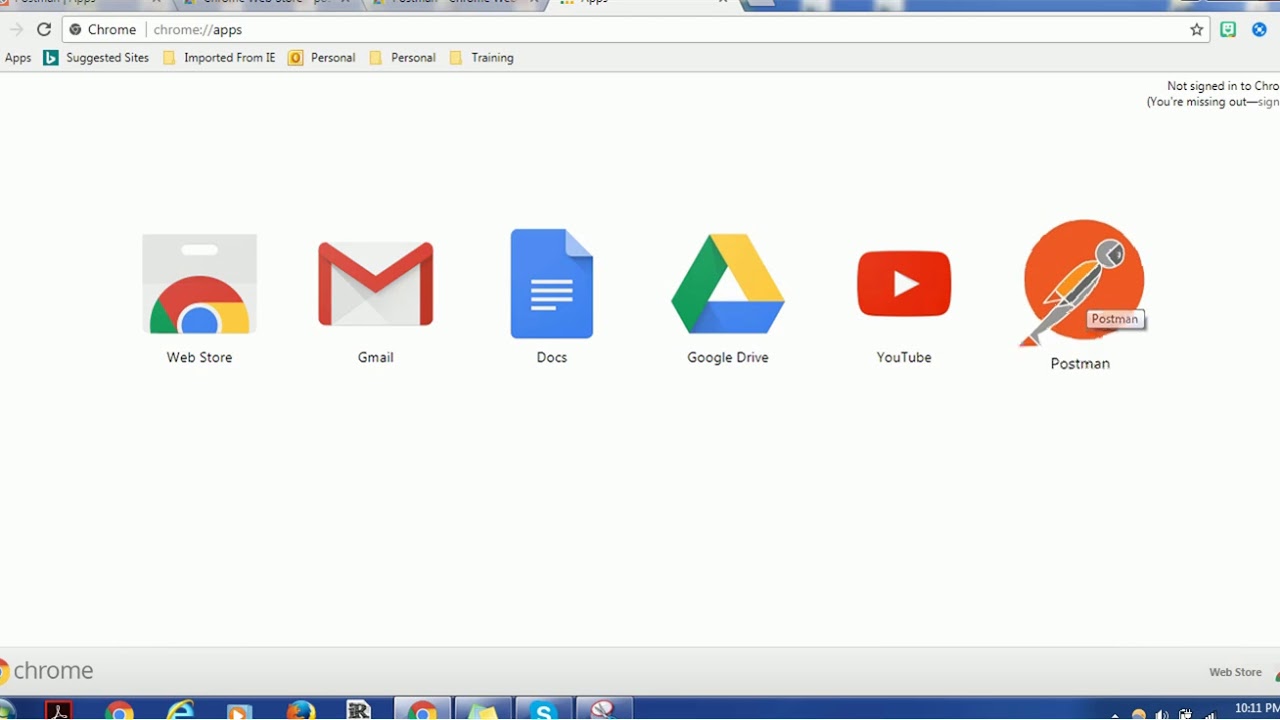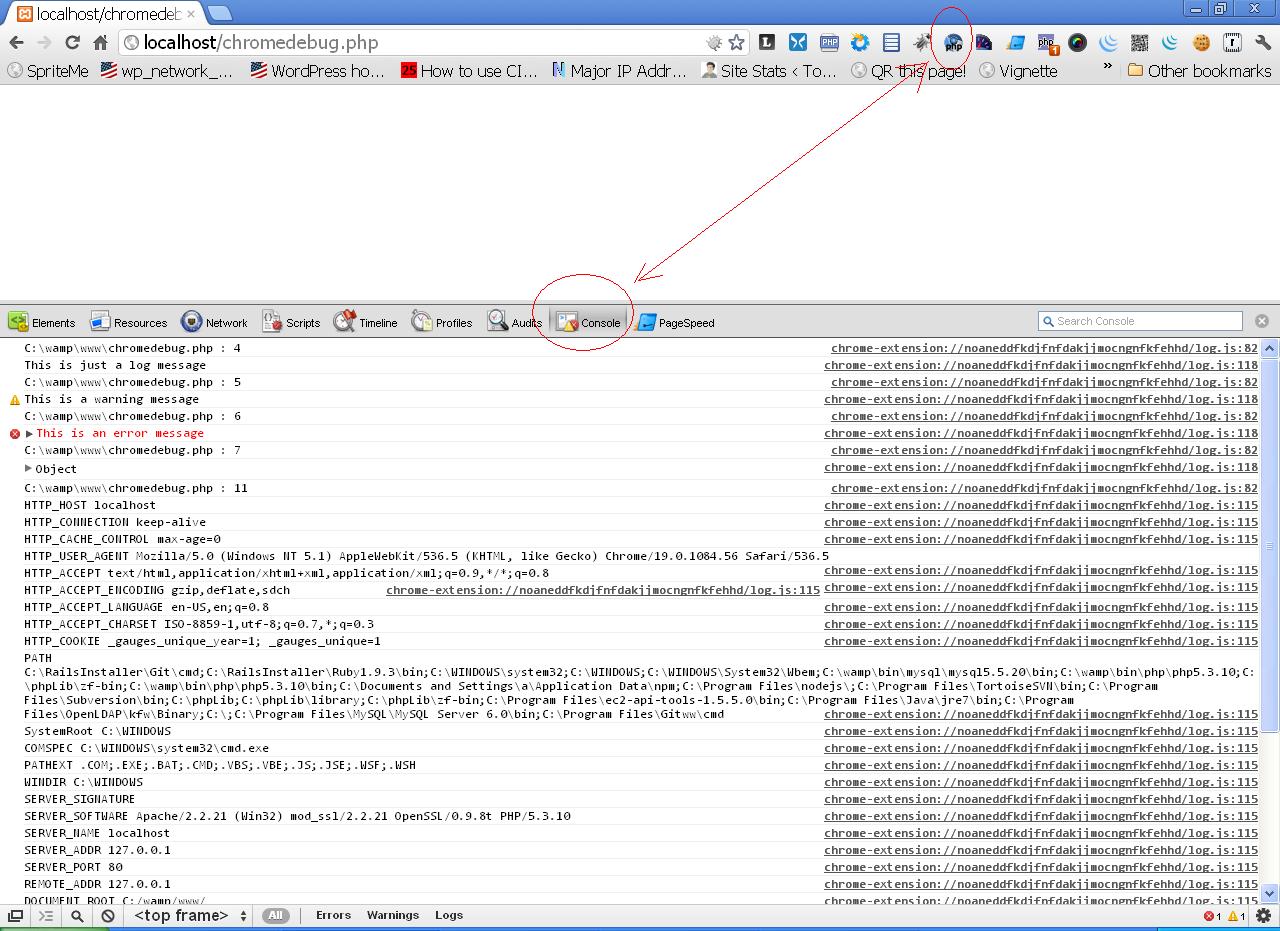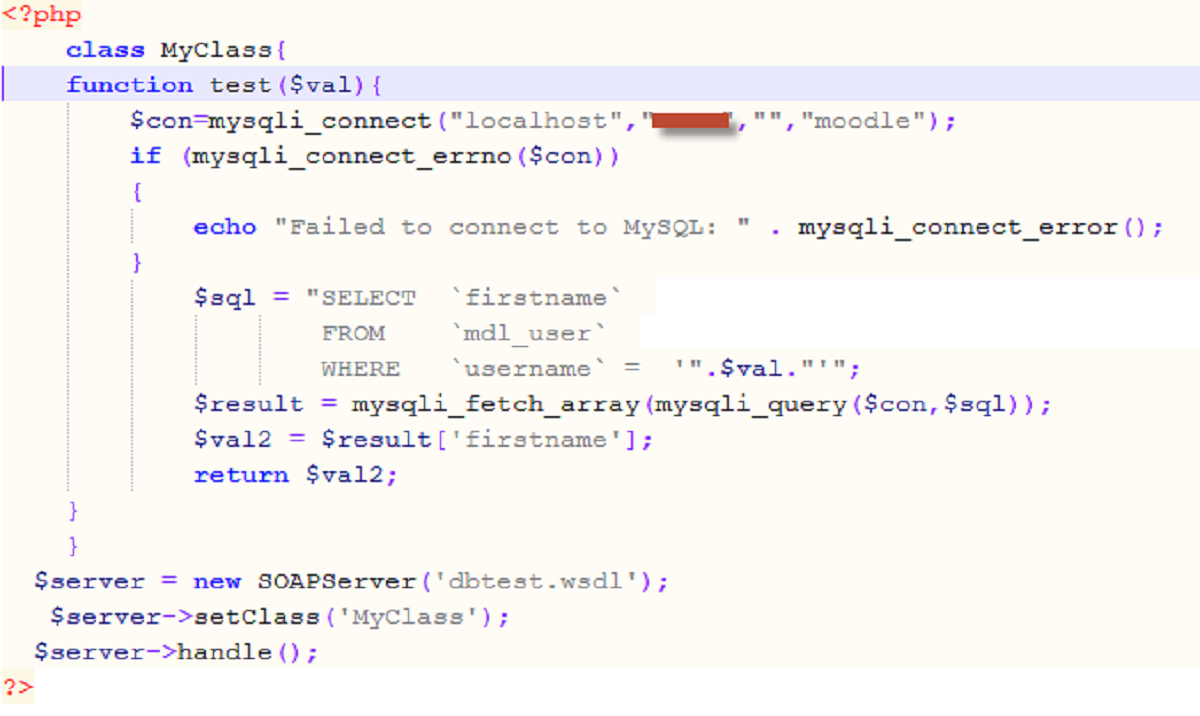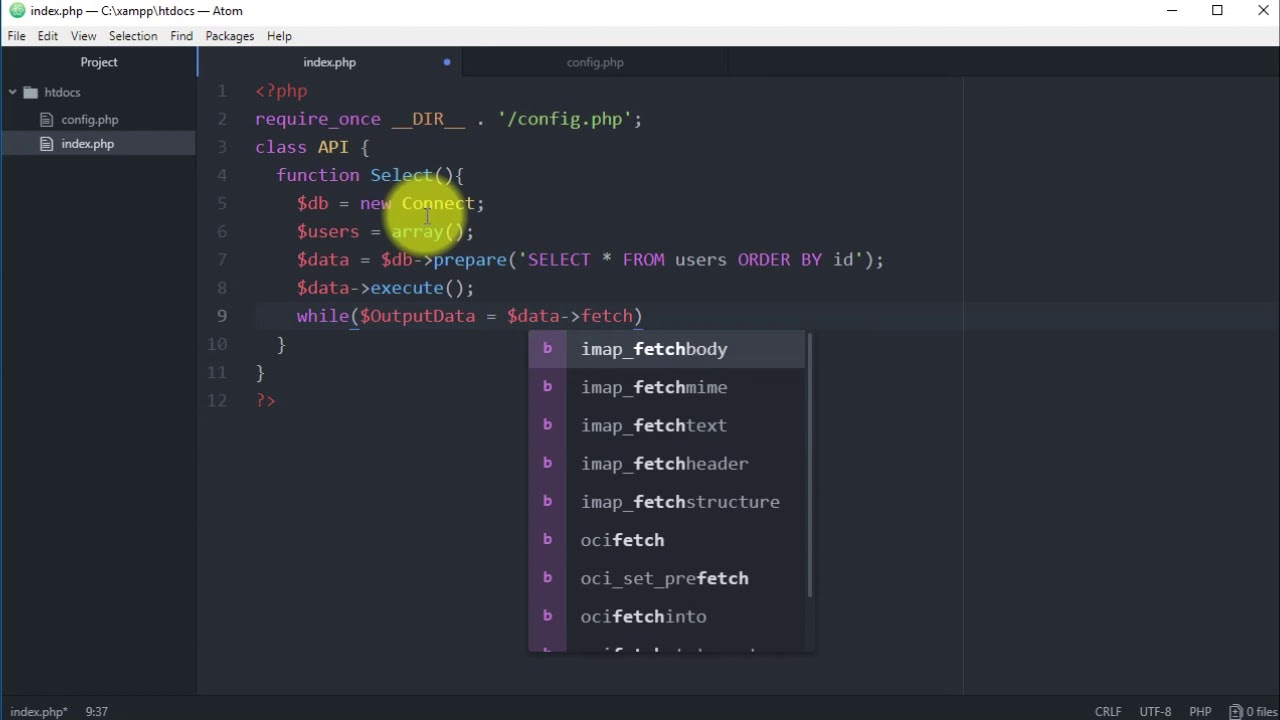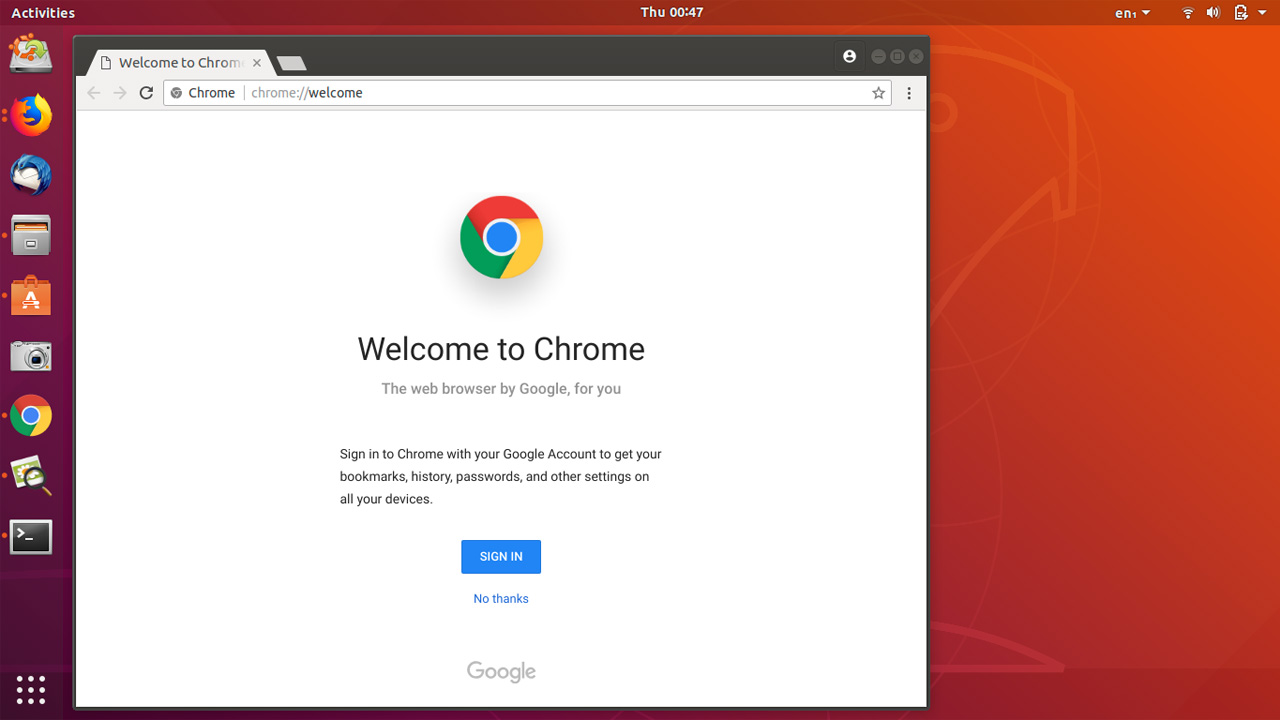Introduction
Chrome Postman is a powerful and user-friendly tool designed to simplify the process of testing, documenting, and sharing APIs. Whether you are a developer, a quality assurance engineer, or a system administrator, Chrome Postman can significantly streamline your workflow and enhance your productivity.
With the increasing complexity of web applications and the growing demand for seamless integration between different systems, the need for efficient API testing and management tools has become more pronounced than ever. This is where Chrome Postman shines, offering a comprehensive set of features that cater to the diverse needs of API development and testing.
By leveraging Chrome Postman, you can effortlessly send various types of HTTP requests, including GET, POST, PUT, and DELETE, to interact with APIs and observe their responses. Furthermore, you can customize headers and parameters, organize and save requests, and utilize environments to streamline your testing process.
In this article, we will delve into the intricacies of using Chrome Postman to its full potential. From the initial installation process to advanced features such as testing and debugging requests, we will provide a comprehensive guide to help you harness the capabilities of this indispensable tool.
Whether you are a seasoned developer seeking to optimize your API testing workflow or a newcomer looking to familiarize yourself with the fundamentals of API testing, this article will serve as your go-to resource for mastering Chrome Postman. So, let's embark on this journey to unlock the full potential of Chrome Postman and elevate your API testing experience.
Installing Chrome Postman
To begin harnessing the capabilities of Chrome Postman, the first step is to install this indispensable tool. Chrome Postman is available as a browser extension, making it easily accessible and seamlessly integrated into your web development environment.
Step 1: Accessing the Chrome Web Store
Open your Google Chrome browser and navigate to the Chrome Web Store. You can do this by clicking on the Apps icon in the bookmarks bar or by typing "chrome://apps/" in the address bar and pressing Enter. Once you are in the Chrome Web Store, you can search for "Postman" in the search bar located in the upper-left corner of the page.
Step 2: Installing the Extension
Upon finding the Chrome Postman extension in the search results, click on it to access the extension's page. Here, you will find an "Add to Chrome" button. Click on this button to initiate the installation process. A confirmation dialog will appear, prompting you to confirm the installation. Click "Add extension" to proceed with the installation.
Step 3: Accessing Chrome Postman
Once the installation is complete, you will notice the Chrome Postman icon added to the browser's toolbar or the Apps section. Click on the icon to launch Chrome Postman and start exploring its robust features.
By following these simple steps, you can seamlessly integrate Chrome Postman into your Chrome browser, empowering yourself with a versatile and efficient tool for API testing and management. With Chrome Postman at your disposal, you are well-equipped to streamline your API testing workflow and elevate your development process.
Whether you are a seasoned developer or a newcomer to the world of API testing, Chrome Postman's intuitive interface and comprehensive feature set make it an invaluable asset in your toolkit. With the installation process complete, you are now ready to dive into the myriad capabilities of Chrome Postman and unlock its full potential.
Sending a GET Request
Sending a GET request is a fundamental aspect of API testing, allowing you to retrieve data from a specified resource. With Chrome Postman, initiating a GET request is a straightforward process that empowers you to interact with APIs and observe their responses in real time.
Step 1: Launching Chrome Postman
Upon launching Chrome Postman, you will be greeted by a user-friendly interface that facilitates seamless interaction with various HTTP request methods. To initiate a GET request, ensure that the request method is set to "GET" in the request builder section.
Step 2: Specifying the Request URL
Next, you need to specify the URL of the resource from which you intend to retrieve data. This URL should be entered in the address bar located within the request builder section. Whether you are testing a public API or an internal endpoint, Chrome Postman allows you to effortlessly input the URL and proceed to the next step.
Step 3: Sending the GET Request
Once the request URL is specified, you can proceed to send the GET request by clicking the "Send" button. Upon doing so, Chrome Postman will initiate the request and display the corresponding response in the lower section of the interface. This response typically includes the status code, headers, and the actual data retrieved from the specified resource.
Observing the Response
Upon sending the GET request, Chrome Postman promptly presents the response, allowing you to inspect the retrieved data and assess the overall performance of the API endpoint. The response section provides a comprehensive view of the server's response, enabling you to verify the accuracy of the retrieved data and identify any potential issues.
Leveraging Response Features
Chrome Postman offers a range of features to enhance the analysis of the response, including syntax highlighting for JSON and XML data, response time metrics, and the ability to view response headers. These features empower you to gain deeper insights into the response data and make informed decisions based on the retrieved information.
By following these steps, you can effectively send a GET request using Chrome Postman, leveraging its intuitive interface and robust features to interact with APIs and retrieve data from specified resources. Whether you are testing a RESTful API, exploring public endpoints, or validating internal resources, Chrome Postman equips you with the tools needed to streamline the process of sending and analyzing GET requests.
With the ability to seamlessly send GET requests and analyze their responses, Chrome Postman serves as an indispensable ally in your API testing endeavors, empowering you to efficiently interact with diverse resources and gain valuable insights into their behavior and performance.
Sending a POST Request
Sending a POST request is a pivotal aspect of API testing, enabling the submission of data to a specified resource. With Chrome Postman, initiating a POST request involves a seamless process that empowers you to interact with APIs and observe their responses in real time.
Step 1: Launching Chrome Postman
Upon launching Chrome Postman, navigate to the request builder section and ensure that the request method is set to "POST." This selection indicates that the forthcoming request will involve the submission of data to the specified resource.
Step 2: Specifying the Request URL
Next, you need to specify the URL of the resource to which you intend to submit data. This URL should be entered in the address bar within the request builder section. Whether you are testing a public API endpoint or an internal resource, Chrome Postman provides a user-friendly interface for inputting the URL and proceeding to the next step.
Step 3: Defining the Request Body
In a POST request, the data to be submitted is typically included in the request body. Chrome Postman offers a variety of options for defining the request body, including raw text, JSON, form-data, x-www-form-urlencoded, and binary data. Depending on the nature of the data being submitted, you can select the appropriate format and input the data into the request body section.
Sending the POST Request
Once the request URL and body are specified, you can proceed to send the POST request by clicking the "Send" button. Upon doing so, Chrome Postman will initiate the request and display the corresponding response in the lower section of the interface. This response encompasses the status code, headers, and any data returned by the server in response to the submitted data.
Analyzing the Response
Upon sending the POST request, Chrome Postman promptly presents the response, allowing you to inspect the data returned by the server and assess the overall outcome of the request. The response section provides a comprehensive view of the server's response, enabling you to verify the accuracy of the submitted data and evaluate the server's handling of the request.
Leveraging Response Features
Chrome Postman offers a range of features to enhance the analysis of the response, including syntax highlighting for JSON and XML data, response time metrics, and the ability to view response headers. These features empower you to gain deeper insights into the response data and make informed decisions based on the server's handling of the submitted data.
By following these steps, you can effectively send a POST request using Chrome Postman, leveraging its intuitive interface and robust features to interact with APIs and submit data to specified resources. Whether you are testing the creation of new resources, submitting form data, or integrating with third-party services, Chrome Postman equips you with the tools needed to streamline the process of sending and analyzing POST requests.
With the ability to seamlessly send POST requests and analyze their responses, Chrome Postman serves as an invaluable ally in your API testing endeavors, empowering you to efficiently interact with diverse resources and gain valuable insights into their behavior and performance.
Sending a PUT Request
Sending a PUT request is a crucial aspect of API testing, as it facilitates the modification or creation of a resource at a specified URL. With Chrome Postman, initiating a PUT request involves a seamless process that empowers you to interact with APIs and observe their responses in real time.
Step 1: Launching Chrome Postman
Upon launching Chrome Postman, navigate to the request builder section and ensure that the request method is set to "PUT." This selection indicates that the forthcoming request will involve the modification or creation of a resource at the specified URL.
Step 2: Specifying the Request URL
Next, you need to specify the URL of the resource to which you intend to send the PUT request. This URL should be entered in the address bar within the request builder section. Whether you are updating an existing resource or creating a new one, Chrome Postman provides a user-friendly interface for inputting the URL and proceeding to the next step.
Step 3: Defining the Request Body
In a PUT request, the data to be modified or created is typically included in the request body. Chrome Postman offers a variety of options for defining the request body, including raw text, JSON, form-data, x-www-form-urlencoded, and binary data. Depending on the nature of the data being submitted, you can select the appropriate format and input the data into the request body section.
Sending the PUT Request
Once the request URL and body are specified, you can proceed to send the PUT request by clicking the "Send" button. Upon doing so, Chrome Postman will initiate the request and display the corresponding response in the lower section of the interface. This response encompasses the status code, headers, and any data returned by the server in response to the modification or creation of the specified resource.
Analyzing the Response
Upon sending the PUT request, Chrome Postman promptly presents the response, allowing you to inspect the data returned by the server and assess the overall outcome of the request. The response section provides a comprehensive view of the server's response, enabling you to verify the accuracy of the modified or created data and evaluate the server's handling of the request.
Leveraging Response Features
Chrome Postman offers a range of features to enhance the analysis of the response, including syntax highlighting for JSON and XML data, response time metrics, and the ability to view response headers. These features empower you to gain deeper insights into the response data and make informed decisions based on the server's handling of the modified or created resource.
By following these steps, you can effectively send a PUT request using Chrome Postman, leveraging its intuitive interface and robust features to interact with APIs and modify or create resources at specified URLs. Whether you are updating existing data, creating new resources, or implementing changes in a server's state, Chrome Postman equips you with the tools needed to streamline the process of sending and analyzing PUT requests.
With the ability to seamlessly send PUT requests and analyze their responses, Chrome Postman serves as an invaluable ally in your API testing endeavors, empowering you to efficiently interact with diverse resources and gain valuable insights into their behavior and performance.
Sending a DELETE Request
Sending a DELETE request is a critical aspect of API testing, enabling the removal of a specified resource from the server. With Chrome Postman, initiating a DELETE request involves a seamless process that empowers you to interact with APIs and observe their responses in real time.
Step 1: Launching Chrome Postman
Upon launching Chrome Postman, navigate to the request builder section and ensure that the request method is set to "DELETE." This selection indicates that the forthcoming request will involve the removal of a resource at the specified URL.
Step 2: Specifying the Request URL
Next, you need to specify the URL of the resource that you intend to delete. This URL should be entered in the address bar within the request builder section. Whether you are removing an existing resource or implementing a cleanup operation, Chrome Postman provides a user-friendly interface for inputting the URL and proceeding to the next step.
Step 3: Sending the DELETE Request
Once the request URL is specified, you can proceed to send the DELETE request by clicking the "Send" button. Upon doing so, Chrome Postman will initiate the request and display the corresponding response in the lower section of the interface. This response encompasses the status code, headers, and any data returned by the server in response to the deletion of the specified resource.
Analyzing the Response
Upon sending the DELETE request, Chrome Postman promptly presents the response, allowing you to inspect the data returned by the server and assess the overall outcome of the request. The response section provides a comprehensive view of the server's response, enabling you to verify the success of the resource deletion and evaluate the server's handling of the request.
Leveraging Response Features
Chrome Postman offers a range of features to enhance the analysis of the response, including syntax highlighting for JSON and XML data, response time metrics, and the ability to view response headers. These features empower you to gain deeper insights into the response data and make informed decisions based on the server's handling of the resource deletion.
By following these steps, you can effectively send a DELETE request using Chrome Postman, leveraging its intuitive interface and robust features to interact with APIs and remove resources from specified URLs. Whether you are implementing cleanup operations, managing data lifecycle, or testing resource deletion scenarios, Chrome Postman equips you with the tools needed to streamline the process of sending and analyzing DELETE requests.
With the ability to seamlessly send DELETE requests and analyze their responses, Chrome Postman serves as an invaluable ally in your API testing endeavors, empowering you to efficiently interact with diverse resources and gain valuable insights into their behavior and performance.
Adding Headers and Parameters
In the realm of API testing, the ability to customize headers and parameters is paramount, as it allows for precise control over the requests being sent and the data being transmitted. Chrome Postman excels in providing a seamless interface for adding headers and parameters, empowering users to tailor their requests according to specific requirements.
Including Headers
When sending HTTP requests, headers play a crucial role in conveying additional information to the server. With Chrome Postman, adding headers to a request is a straightforward process. Within the request builder section, users can effortlessly include headers such as Content-Type, Authorization, Accept, and more. This level of customization enables users to simulate various scenarios and interact with APIs that require specific header configurations.
Specifying Parameters
In addition to headers, parameters form an integral part of many API interactions, particularly in the context of query parameters for GET requests or form data for POST requests. Chrome Postman offers a user-friendly approach to specifying parameters, allowing users to input key-value pairs directly within the request builder. Whether it involves filtering data, paginating results, or submitting form parameters, Chrome Postman equips users with the flexibility to define and manipulate parameters with ease.
Leveraging Predefined Templates
To streamline the process of adding headers and parameters, Chrome Postman provides predefined templates for common use cases. These templates cover a wide range of scenarios, including authentication, content negotiation, and caching directives. By leveraging these templates, users can expedite the configuration of headers and parameters, ensuring adherence to best practices and industry standards.
Real-time Validation
Chrome Postman offers real-time validation of headers and parameters, alerting users to any potential issues or inconsistencies in their configurations. This proactive validation mechanism helps users identify and rectify errors before sending requests, thereby enhancing the overall accuracy and reliability of API interactions.
By incorporating headers and parameters with precision, users can fine-tune their requests to align with the specific requirements of the target API, fostering a more robust and tailored approach to API testing and interaction. With Chrome Postman's intuitive interface and comprehensive support for customizing headers and parameters, users can elevate their API testing endeavors and gain deeper insights into the behavior and performance of diverse APIs.
Saving and Organizing Requests
Efficiently managing and organizing API requests is essential for maintaining a structured and streamlined testing process. Chrome Postman offers robust features for saving and organizing requests, empowering users to categorize, label, and retrieve their requests with ease.
Saving Requests
When working on API testing scenarios, it's crucial to save requests for future reference and reuse. Chrome Postman allows users to save individual requests or entire collections, ensuring that valuable testing scenarios and configurations are preserved for ongoing use. By simply clicking the "Save" button within the request builder, users can store their requests with descriptive names and relevant metadata, facilitating seamless retrieval and re-execution.
Organizing Requests into Collections
To further enhance request management, Chrome Postman enables users to organize related requests into collections. This feature is particularly beneficial for grouping requests based on specific APIs, endpoints, or testing scenarios. By creating collections and assigning requests to them, users can establish a structured hierarchy that aligns with their testing objectives, thereby fostering a more organized and intuitive testing environment.
Utilizing Folders and Tags
Within collections, Chrome Postman offers the flexibility to create folders and apply tags to requests, providing granular control over request organization. Folders can be used to categorize requests based on functional areas or testing phases, while tags enable users to assign descriptive labels that facilitate quick search and retrieval. This level of categorization empowers users to navigate through their requests efficiently and locate specific items based on predefined criteria.
Search and Filtering Capabilities
Chrome Postman's search and filtering capabilities further augment the process of organizing requests. Users can swiftly locate specific requests or collections by utilizing the search functionality, which supports keyword-based queries and filters. This functionality streamlines the retrieval of relevant requests, especially in scenarios where a large number of requests and collections are present within the workspace.
Exporting and Sharing
In addition to internal organization, Chrome Postman allows users to export collections, making it possible to share testing scenarios and configurations with team members or external stakeholders. This capability facilitates collaboration and knowledge sharing, as users can seamlessly exchange their curated collections, thereby promoting consistency and alignment across API testing efforts.
By leveraging Chrome Postman's comprehensive features for saving and organizing requests, users can establish a well-structured and efficient testing environment. The ability to categorize, label, and retrieve requests with precision enhances the overall agility and effectiveness of API testing, ensuring that valuable testing scenarios are preserved and readily accessible for ongoing testing and collaboration.
Using Environments
In the realm of API testing and development, the concept of environments plays a pivotal role in facilitating seamless transitions between different configurations, endpoints, and data sets. Chrome Postman offers a robust feature set for utilizing environments, empowering users to manage variables, adapt to diverse testing scenarios, and streamline the process of testing APIs across various deployment environments.
Defining Environments
Within Chrome Postman, environments serve as containers for storing key-value pairs, representing variables that can be dynamically utilized within requests. These variables encompass a wide range of use cases, including endpoint URLs, authentication credentials, API keys, and other contextual data. By defining environments, users can encapsulate the specific configurations and parameters relevant to distinct testing environments, such as development, staging, and production.
Switching Between Environments
One of the primary advantages of using environments in Chrome Postman is the ability to seamlessly switch between different configurations without modifying individual requests. This flexibility enables users to execute the same set of requests across multiple environments, leveraging the respective variables defined within each environment. By simply selecting the desired environment from the dropdown menu, users can effortlessly adapt their testing efforts to align with specific deployment contexts, thereby promoting consistency and efficiency.
Managing Environment Variables
Chrome Postman provides a user-friendly interface for managing environment variables, allowing users to add, edit, and delete variables within each environment. This level of control empowers users to maintain accurate and up-to-date configurations, ensuring that the variables utilized within requests accurately reflect the corresponding environment's settings. Additionally, the ability to reference environment variables within request URLs, headers, and bodies further enhances the adaptability and reusability of testing scenarios.
Enabling Dynamic Testing Scenarios
By leveraging environments, users can create dynamic testing scenarios that adapt to different deployment environments and configurations. This capability is particularly valuable in scenarios where APIs interact with varying backend systems, databases, or third-party services. With environments, users can seamlessly transition between test data sets, authentication mechanisms, and endpoint URLs, fostering a comprehensive approach to API testing that accounts for diverse operational contexts.
Promoting Consistency and Reusability
The use of environments in Chrome Postman promotes consistency and reusability across API testing efforts. By encapsulating environment-specific variables and configurations, users can maintain standardized testing practices while accommodating the nuances of different deployment environments. This approach minimizes the need for manual adjustments to requests, streamlining the testing process and reducing the likelihood of errors stemming from environment-specific discrepancies.
In essence, the utilization of environments in Chrome Postman empowers users to orchestrate comprehensive and adaptable API testing scenarios. By harnessing the capabilities of environments, users can navigate seamlessly across diverse deployment contexts, manage variables with precision, and foster a testing environment that aligns with the intricacies of real-world API interactions. This feature serves as a cornerstone of effective API testing, enabling users to maintain agility, consistency, and accuracy in their testing endeavors.
Testing and Debugging Requests
Testing and debugging are integral phases of the API development lifecycle, ensuring that APIs function as intended and deliver the expected outcomes. Chrome Postman provides a comprehensive suite of features to facilitate rigorous testing and effective debugging of API requests, empowering users to validate functionality, identify issues, and optimize the performance of their APIs.
Automated Testing Workflows
Chrome Postman offers a robust testing environment through its support for automated testing workflows. Users can define test scripts using JavaScript, allowing for the creation of automated test scenarios that validate the responses received from API requests. By leveraging assertions and conditional logic within test scripts, users can verify the correctness of response data, assess response times, and validate the behavior of APIs under varying conditions.
Response Validation and Assertions
The ability to validate responses and assert specific conditions is a fundamental aspect of testing and debugging requests. Chrome Postman enables users to define assertions within test scripts, empowering them to verify response status codes, inspect response bodies for expected data, and evaluate the presence of specific headers. This level of response validation ensures that APIs adhere to predefined criteria and deliver the anticipated outcomes, thereby fostering confidence in the reliability of API interactions.
Debugging and Error Handling
In scenarios where API requests encounter errors or unexpected behaviors, Chrome Postman provides robust capabilities for debugging and error handling. Users can leverage the console output within Chrome Postman to inspect detailed logs, view error messages, and diagnose issues that may arise during API testing. This real-time visibility into request execution and response handling facilitates proactive debugging, enabling users to pinpoint the root causes of issues and implement corrective measures effectively.
Performance Monitoring and Metrics
Chrome Postman equips users with tools to monitor the performance of API requests and capture relevant metrics. By leveraging the built-in capabilities for tracking response times, latency, and throughput, users can gain insights into the performance characteristics of their APIs. This data-driven approach to performance monitoring enables users to identify bottlenecks, optimize resource utilization, and ensure that APIs meet the defined performance objectives.
Iterative Testing and Iteration
The iterative nature of API development and testing necessitates a flexible and iterative approach to testing and debugging requests. Chrome Postman supports iterative testing by allowing users to modify and re-execute requests in real time, facilitating rapid iterations and refinements. This iterative testing capability empowers users to validate changes, assess the impact of modifications, and iteratively refine API behaviors, thereby fostering an agile and responsive testing process.
In essence, Chrome Postman's comprehensive suite of testing and debugging features empowers users to conduct thorough and effective testing of API requests. By facilitating automated testing workflows, response validation, debugging capabilities, performance monitoring, and iterative testing, Chrome Postman serves as a versatile and indispensable tool for ensuring the reliability, functionality, and performance of APIs.







